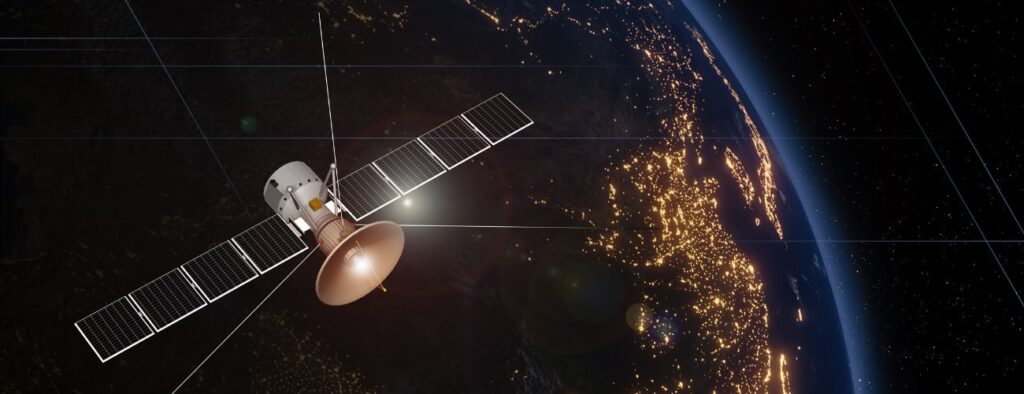Satellite connectivity has emerged as a groundbreaking technology, revolutionizing the way we stay connected in today’s digitally driven world. In this blog, we will dive deeper into the technological intricacies that power satellite connectivity, exploring the satellites themselves, the transmission process, and the innovations that are propelling this technology toward a bright future.
Satellite technology: An overview
Satellites are complex technological marvels that orbit the Earth, enabling global connectivity. These satellites can be broadly classified into two types: geostationary satellites (GEO) and low Earth orbit (LEO) satellites:
Geostationary Satellites: Positioned at an altitude of approximately 35,786 kilometers above the equator, geostationary satellites remain fixed relative to a specific point on the Earth’s surface. They complete one orbit in approximately 24 hours, matching the Earth’s rotational period. Due to their high altitude, they provide continuous coverage over a specific geographic area.
Low Earth Orbit Satellites: LEO satellites orbit the Earth at altitudes ranging from a few hundred to a few thousand kilometers. Unlike GEO satellites, LEO satellites move at high speeds, completing several orbits per day. They operate in constellations, forming a mesh network to ensure uninterrupted connectivity.

Process of satellite connectivity: Transmission process
The process of satellite connectivity involves a series of complex steps to transmit and receive data.
Uplink
Users transmit data from their devices to the satellite using a satellite dish or terminal. The data signals travel from the user’s terminal to the satellite in space.
Satellite communication
The satellite receives the data signals and amplifies them before retransmitting them back to Earth.
Ground station/NOC
The retransmitted signals are received by a ground station or network operation center (NOC). These facilities serve as the gateway between the satellite network and the internet backbone.
Internet backbone
Once the signals reach the ground station/NOC, they are routed through the internet backbone, which comprises high-capacity fiber optic cables, to reach their destination.
Downlink
The data is then transmitted back to the user’s terminal via the satellite, completing the transmission process.
Advancements propelling satellite connectivity:
The future of satellite connectivity is being shaped by remarkable advancements that enhance its capabilities and expand its reach.
LEO constellations
Companies like SpaceX’s Starlink, OneWeb, and Amazon’s Project Kuiper are deploying constellations of LEO satellites to provide global internet coverage. By having multiple satellites in a constellation, they can work together to maintain seamless connectivity and ensure consistent coverage.
Inter-satellite links
LEO constellations are integrating inter-satellite links, enabling direct communication between satellites. This reduces the reliance on ground-based infrastructure, improves network efficiency, and enables faster data transmission.
High-frequency bands
Satellite operators are exploring the use of higher frequency bands, such as Ka-band and V-band, to increase the available bandwidth for users. These bands offer greater data throughput and can support bandwidth-intensive applications like video streaming and cloud computing.
Advancements in antenna technology
Smaller, more efficient, and cost-effective user terminals are being developed, making satellite connectivity more accessible to a wider audience. Innovations like phased array antennas enable tracking multiple satellites simultaneously, enhancing the user experience.
Signal processing and compression
Signal processing techniques and data compression algorithms are being optimized to increase the efficiency of satellite communication. This helps in maximizing bandwidth utilization and improving overall system performance.
Satellite connectivity is a remarkable feat of technology that empowers individuals and communities with global connectivity. With advancements in satellite technology, the deployment of LEO constellations, and innovations in transmission processes, satellite connectivity is poised to shape the future of global connectivity.
As this technology continues to evolve, we can look forward to a world where reliable and high-speed internet access becomes a reality for all, bridging the digital divide and enabling unprecedented opportunities for individuals and societies around the globe.


